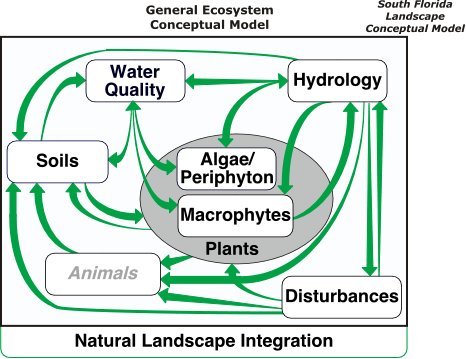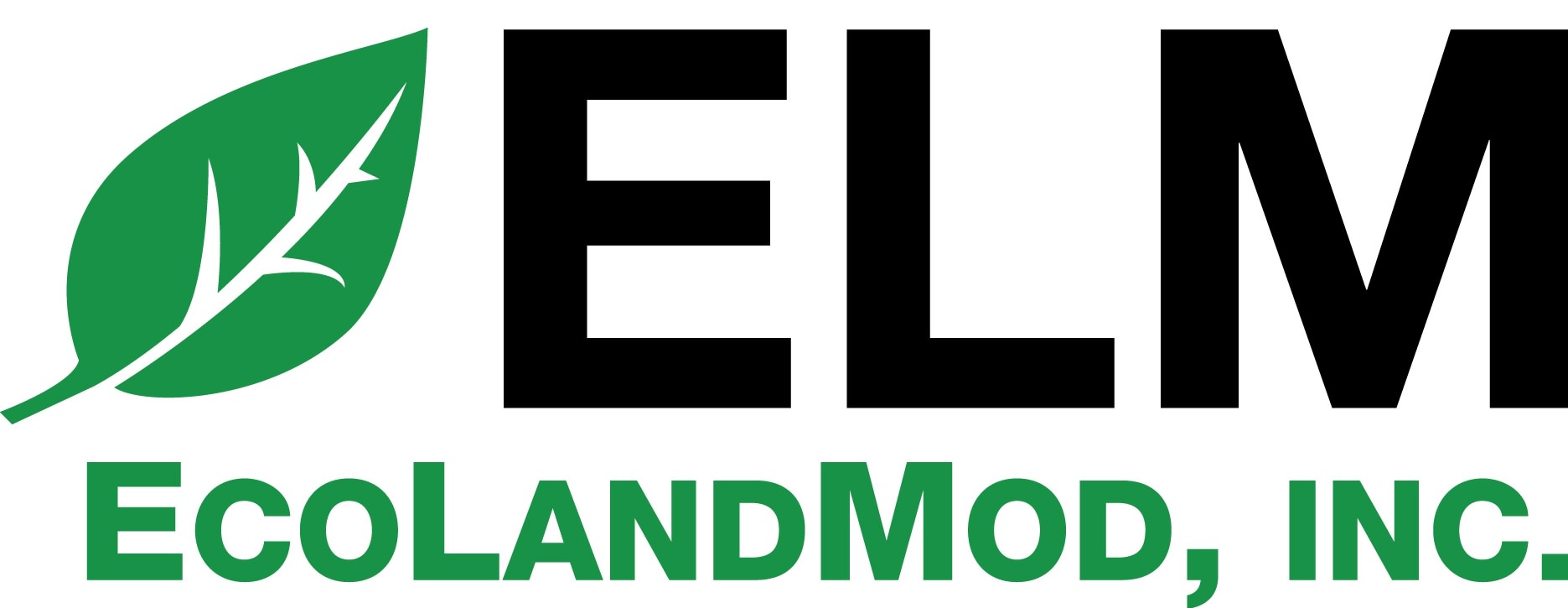![]() Background |
Models |
Projects |
Publications |
People |
News
Background |
Models |
Projects |
Publications |
People |
News
![]() Background |
Models |
Projects |
Publications |
People |
News
Background |
Models |
Projects |
Publications |
People |
News
Introduction
Wetlands & ecological models
Conceptual model: South Florida
Generic modeling framework

Animal communities tend to integrate and respond to many of the factors that change the habitat mosaic of the landscape. Different populations of animal species have distinct reproductive and migratory habits that result in complex seasonal, annual, and decadal shifts in their population viability as the landscape evolves.
The current Everglades Landscape Model does not consider animal dynamics, simulating only their habitat landscape. The ELM assumes that the higher trophic levels respond to changes in habitat, without the animal communities affecting the regional landscape changes over long time periods. Although most animals do not appear to significantly affect ecosystem processes or landscape patterns, some modify local habitats at small spatial scales, such as the development of ponds excavated by alligators for nesting, or local nutrient enrichment from colonies of birds.
Wading birds are one of the conspicuous animals that thrive in the various hydrologic and habitat gradients of the Everglades. They respond to changing water levels and availability of (fish and other) prey, and can select for subregions throughout south Florida as conditions change among seasons and years. While fish are capable of migrating within regions of suitable hydrology and habitat, they obviously become limited in range, (and potentially more available as prey), as a region dries out. Many Everglades fish are omnivorous, feeding on a variety of detrital and invertebrate food sources. The nature of the interactions among animal populations, and among animals and their habitats, is one (very dynamic) indicator of the "health" of the landscape.
 EcoLandMod Background
EcoLandMod Background